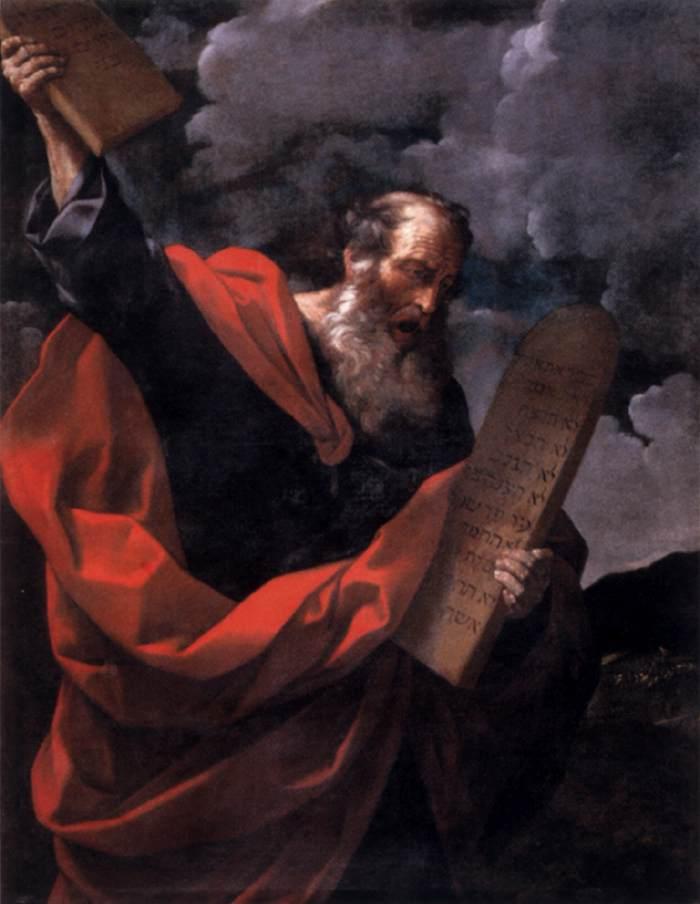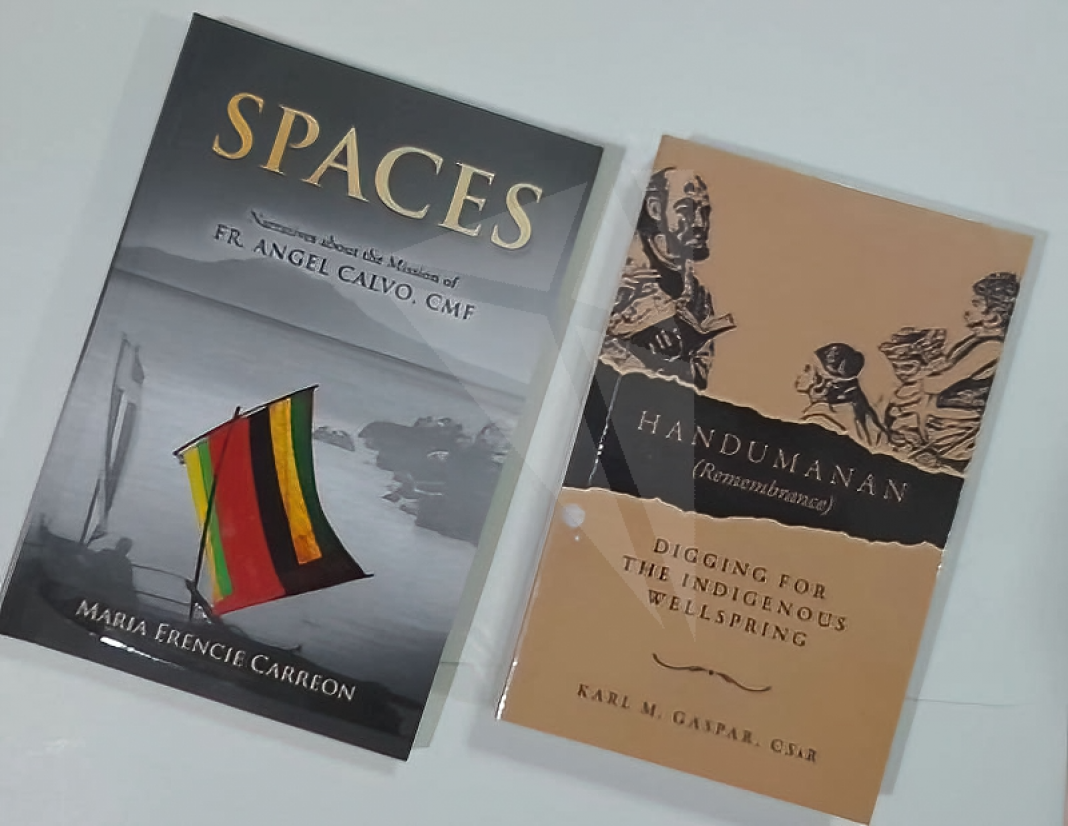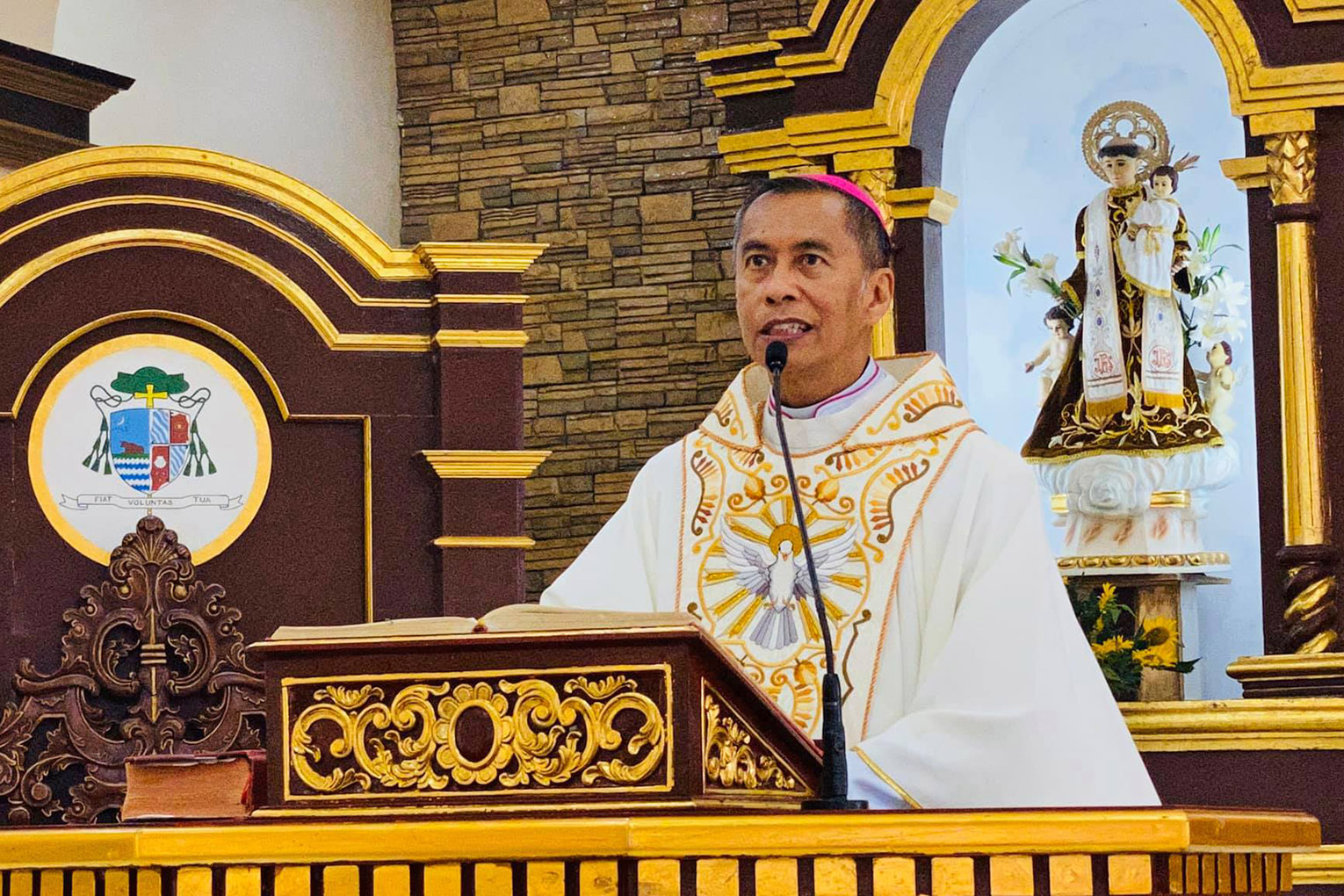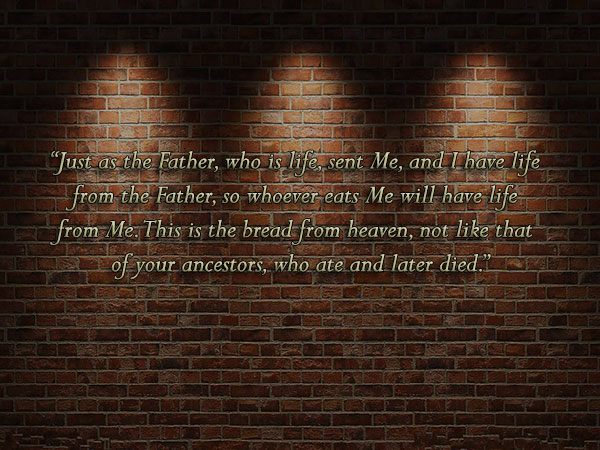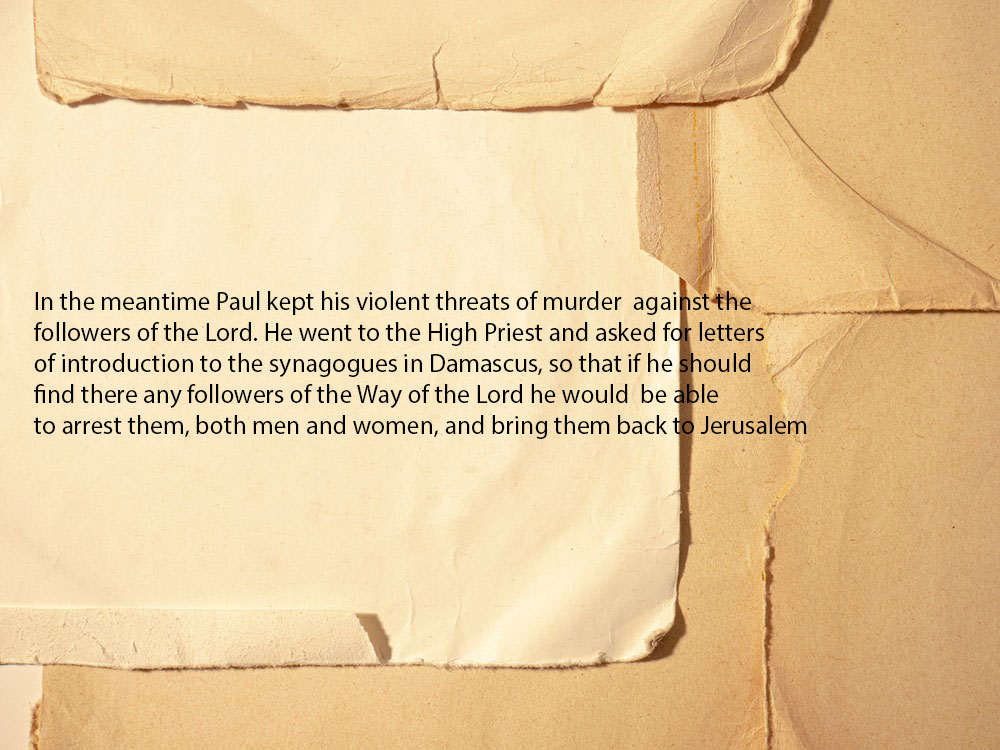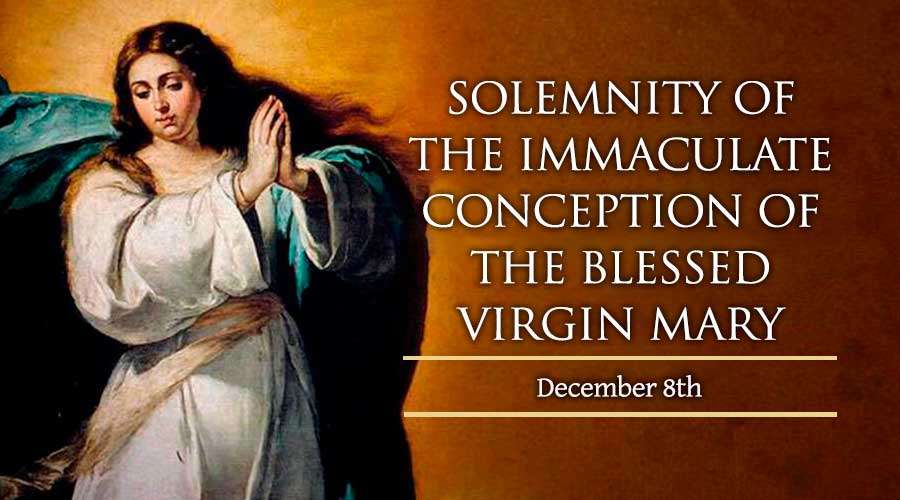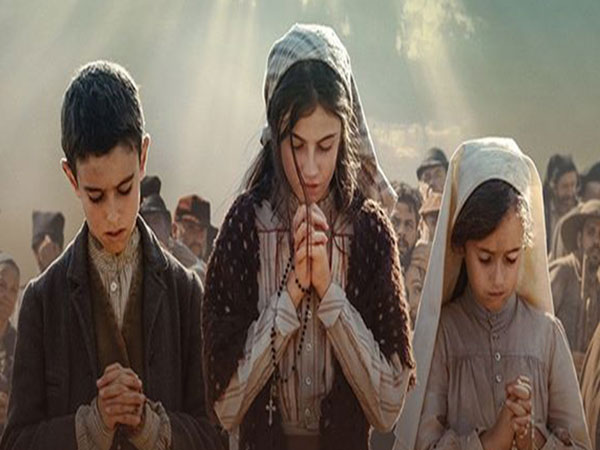
Msgr. Fernando G. Gutierrez
See, I am creating new heavens
and a new earth;
The former things shall not be remembered
nor come to mind.
Instead, shout for joy and be glad forever
in what I am creating.
Indeed, I am creating Jerusalem to be a joy
and its people to be a delight;
I will rejoice in Jerusalem
and exult in my people.
No longer shall the sound of weeping be heard there,
or the sound of crying;
No longer shall there be in it
an infant who lives but a few days,
nor anyone who does not live a full lifetime;
One who dies at a hundred years shall be considered a youth,
and one who falls short of a hundred shall be thought accursed.
They shall build houses and live in them,
they shall plant vineyards and eat their fruit;
They shall not build and others live there;
they shall not plant and others eat.
As the years of a tree, so the years of my people;
and my chosen ones shall long enjoy
the work of their hands.
They shall not toil in vain,
nor beget children for sudden destruction;
For they shall be a people blessed by the LORD
and their descendants with them.
Before they call, I will answer;
while they are yet speaking, I will hear.
The wolf and the lamb shall pasture together,
and the lion shall eat hay like the ox—
but the serpent’s food shall be dust.
None shall harm or destroy
on all my holy mountain, says the LORD. (Isaiah 65: 17-25.)
The Philippine version of new normal or new heavens and new earth
If there’s one thing that people miss the most during the quarantines imposed due to COVID-19, it is physical connection. At Enhanced Community Quarantine, it is visible the streets are now mostly empty of children playing after school. Churches don’t have parishioners kneeling elbow-to-elbow during Eucharistic celebration.
While communities are slowly getting prepared to new normal, online learning and face-to-face students’ attendance will be reduced to a minimum. Workforce with less than one-half of the employees will be allowed. Special family occasions, such as birthday mañanitas, are still not allowed.
During baptisms, only immediate family members and one or a pair of godparents are allowed to attend the ceremony, the CBCP said.
Weddings are strictly observed to follow protocols:
1. No more “abays” during wedding,
2. Only the bride and the groom, their parents, and a set of sponsors are allowed in the rites.
3. The holding of hands while singing and praying the “Our Father” as well as the shaking of hands during the Sign of Peace, which were also prohibited in a January 29 circular.
4. To observe social distancing, markers will be set up on the benches and pews to indicate where the faithful could go and sit inside the church.
5. For the Holy Communion: distribute the bread only on the hand, priests and lay ministers administering the Eucharist are required to sanitize their hands before and after the distribution.
6. The number of choir members who will sing during the celebrations need to be reduced to observe social distancing. CBCP advised only a cantor who will lead the assembly in the singing.
7. No hand-shake or beso-beso.

Handwashing is thus one of the most effective ways to avoid getting sick and to prevent the spread of various illnesses including COVID-19. (Cf. All hands on deck towards a safe ‘new normal’ for the Philippines. INQUIRER.net BrandRoom / 10:23 AM June 26, 2020)
While so much is done by the government, LGUs and NGOs, however, it is disheartening to see jeepney drivers shedding tears of sorrow for their family who goes hungry, construction workers abandoned by their employers without food and money to send home to their loved ones, and locally stranded individuals (LSIs), who while waiting for their flight or travel by boat to go back to their provinces, were left out in the streets or under skyways to protect themselves from scorching heat or rain during the day. They were exposed to mosquito bites or virus in the air. Recently, the DTr permitted the LSIs to go inside the airport or pier terminals.
Another most heartbreaking, though, are parents serving at the frontline who cannot go home at night, tuck in and kiss her/his infant goodnight.
After more than a hundred days of quarantine, the country is slowly, but carefully lessening quarantine restrictions. However, no one should celebrate just yet. There is “Dominant,” another virus in the offing. Sarah Kaplan and Joel Achenbach reporting for Washington Post, Democracy Dies in Darkness July 2 wrote that the mutation doesn’t appear to make people sicker, but a growing number of scientists worry that it has made the virus more contagious. In the mutant virus, the genetic instructions for just one of those amino acids — number 614 — switched in the new variant from a “D” (shorthand for aspartic acid) to a “G” (short for glycine), officially designated as D614G. In most places where the original virus was dominant before March were eventually taken over by the mutated version. This switch often took place in a matter of weeks. This was especially apparent in the United States: Ninety-six percent of early sequences here belonged to the D variant, but by the end of March, more than two thirds of sequences carried the G amino acid instead. “The bottom line is, we haven’t seen anything definitive yet,” said Jeremy Luban, a virologist at the University of Massachusetts Medical School.
Last July 6, Caroline Westbrook of MetroUK, reports that China has other infectious threats, with a suspected bubonic plague case in the Inner Mongolia Autonomous Region. Regional authorities ordered residents not to hunt wild animals such as marmots or rodents. Pneumonic plague can develop from bubonic plague and results in a severe lung infection causing shortness of breath, headache and coughing.
That pandemic, known as the Black Death, claimed the lives of an estimated 75m-200m people – around 30 to 60 per cent of Europe’s population. The Great Plague of London, killed 100,000 people between 1665-1666. The plague was one of the deadliest pandemics in the history of the world. It was widespread from Eurasia and North Africa from 1347-1351.
As of 2009 to 2018, China has reported only a handful of cases in recent years – from the confirmed 26 cases and 11 deaths.

Soothsayers
Soothsayers of all kinds predict the end of the world with their belief on Isaiah 65: 17-25 and other Biblical texts (Psalm 74:9; 2; Matthew 16:3; 24:3, 6, 7, 8, Matthew 24:6, 10, 14, 19; 23, 37; Luke 12:56; 21:11, 25; Timothy 3:1.) .
Caveat: The New Heavens and the New Earth have nothing to do with the imminent end of the world.
1. Joseph Smith, founder of the Mormon church predicted the world would end by 1891, and a group that would eventually become the Seventh-Day Adventists predicted the end by 1843.
2. Some bad-science related predictions include the Y2K scare (which didn’t even burn out a light bulb), several “planetary alignment” predictions that would throw the Earth into tumult (including one in 2000 by Richard Noone), the return of Halley’s Comet in 1910 would envelope Earth in deadly toxic gases, and of course, all the 2012 predictions, which are based on very inaccurate science and the downright mean and nasty tactic of trying to scare people.
3. Nostradumus, a.k.a. Michel de Nostredame has been one of the longest-running predictors of doom and gloom, and his vague, metaphorical writings have intrigued people for over 400 years. The vagueness allows for very flexible interpretations, allowing some people to claim that a number of Nostradamus’ predictions have come true. One prediction he gave included a year: “The year 1999, seventh month / From the sky will come great king of terror.”
4. The latest prediction comes from Harold Camping, a preacher from California who says the Second Coming of Jesus will occur conveniently at 6 pm local time for each time zone around the world coming up this weekend, on May 21, 2011.
While he claims to have used math to predict this event, perhaps a better use of math would be to count how many times soothsayers and doomsday con artists have incorrectly predicted the end of the world in the past. So, far they have all been 100% wrong. Camping himself is guilty of incorrectly predicting the end of the world back in 1994, so his track record is not very good either. So, if you’re wondering – mathematically speaking — based on the number of past predictions of the end of the world being right, and the number of past predictions of Camping about the end of the world being right, the odds of Camping being wrong this time are 100%.
Interestingly, many past predictions of the end of the world coincide with religious fanaticism and/or trying to make money. (Camping has amassed $120 million in donations from fervent followers). One of the most recent was God’s Church minister Ronald Weinland who pitched his book “2008: God’s Final Witness” by predicting the world would end by 2008, with the “end times” beginning in 2006.
5. Before that, it was the Heaven’s Gate mess, where Applewhite’s followers actually did kill themselves so that they would be taken by an alien spacecraft coming along with comet Hale-Bopp in 1997. This prediction included accusations of a huge cover-up by NASA who supposedly knew the alien craft was hidden in the comet’s coma.
6. Televangelist Pat Robertson predicted Judgment Day would come in 1982. Scarily, Robertson later ran for president of the United States. (Cf. Universe Today. Space and astronomy news.)
7. The Doomsday Clock represents the hypothetical global catastrophe as “midnight” and the Bulletin’s opinion on how close the world is to a global catastrophe as a number of “minutes” to midnight, assessed in January of each year. The main factors influencing the Clock are nuclear risk and global warming (climate change). The Bulletin’s Science and Security Board also monitors new developments in the life sciences and technology that could inflict irrevocable harm to humanity.
The Clock’s original setting in 1947 was seven minutes to midnight. It has been set backward and forward 24 times since then, the largest-ever number of minutes to midnight being 17 (in 1991), and the smallest 100 seconds (1 minute and 40 seconds) in January 2020.
The clock was set at two minutes to midnight in January 2018, and left unchanged in 2019 due to the twin threats of nuclear weapons and the increasing effects of global warming. On January 23, 2020, it was moved forward to 100 seconds (1 minute 40 seconds) before midnight, based on the increased threats to global stability posed by “a nuclear blunder”, exacerbated by the rate of climate change. (Wikipedia)
8. The Sun, A News UK Company reports that Coronavirus pandemic is helping doomsday cults recruit new followers.
(Callie Patteson18 Jun 2020, 23:47. Updated: 19 Jun 2020, 11:18)
The coronavirus pandemic is being used as a recruiting tool for cults and fringe religion groups, experts warn.
Steven Hassan, a former member of the Unification Church of Sun Myung and cult expert, believes that COVID-19 is providing cult leaders with an opening to grow their following.
He said, “Cult leaders always know that when there’s a major disruption, if there’s an economic problem, if there’s a terrorist attack, if there’s an earthquake or tsunami, they’re going to capitalize on that because they use fear as a primary manipulation tool to make people feel like it’s not safe out there.” He added, “People want a sense of control to survive and if someone claims they are getting revelations and speaking with angels, others are likely to gravitate towards those ‘answers’”. (Azfamily.com.)
A couple, who had been accused by police for the murder of their children, admitted they are members of a “prepper” community, a group of people that stockpile goods to prepare for natural disasters, economic disasters, terrorist attacks or the end of the world.
If there are disruptions in people’s lives, such as pandemic, terrorism, doomsday, cult leaders “convince” their prospects that this “new family” will provide love, protection, haven and salvation that their biological family neglect to offer them. It’s all a scare tactic, a strategy intended to manipulate the public about a particular issue by arousing fear or alarm.

Theological “new normal” on Isaiah New Heavens and New Earth (Isaiah 65: 17-25)
This new human and cosmic creation was inaugurated with the Resurrection of Christ, the first fruits of that transfiguration to which we are all destined. At the same time, Sacred Scripture weaves a golden thread, as it were, through the weaknesses, miseries, violence and injustices of human history and leads to a messianic goal of liberation and peace. On these sound biblical foundations, the Catechism of the Catholic Church teaches that “the visible universe, then, is itself destined to be transformed, ‘so that the world itself, restored to its original state, facing no further obstacles, should be at the service of the just’, sharing their glorification in the risen Jesus Christ” (CCC, n. 1047; cf. St Irenaeus, Adv. Haer., 5, 32, 1. John Paul II
GENERAL AUDIENCE. Wednesday 31 January 2001).
Other theological reflections
A. We celebrate with joy the Resurrection of Jesus. Since Jesus, by His Resurrection, has opened for us the way to a new life, we also celebrate with hope our future resurrection. From the book of Revelation Saint John has a vision of a new heaven and a new earth and of a new Jerusalem coming down out of heaven from God (21:1-5). This new heaven and new earth refer to the mysterious transformation of humanity and the world that will take place at the Second Coming of Jesus at the end of time.
We are called to live in hope of the new heaven and the new earth. We do not know when the Second Coming will occur nor do we know the way in which the universe will be transformed. It remains a mystery. Yet, we believe, as the Church teaches, that the form of this world, distorted by sin, is passing away, and we are taught that God is preparing a new dwelling and a new earth in which righteousness dwells, in which happiness will fill and surpass all the desires of peace arising in our hearts (Gaudium et Spes 39, Second Vatican Council).
We might feel overwhelmed by the weakness, miseries, violence, injustices, sufferings, and misfortunes of earthly life and human history. Some may even adopt a fatalistic view, become indifferent, believing that nothing can change and that there is no sense of hoping. This is not the Christian perspective. We believe that God entered the world and human history in His Son who continues to be in our midst.
Through His Church, the Lord continues to establish His kingdom of truth, justice, love, and peace in time and space, the Kingdom that will come in its fullness at the end of time, after the universal judgment.
Our expectation of the new heaven and the new earth not only gives us hope, it is also a stimulus for our engagement with the world. We must not fall into the extremes of isolation or secularism. The Second Vatican Council emphasized our duty to penetrate and perfect the temporal order with the spirit of the Gospel (Decree on the Apostolate of the Laity 5). With hope of the new heaven and the new earth, we can walk courageously in this life, cooperating with the Lord in building up His Kingdom through our works of mercy, justice, and love. (Cf. Today’s Catholic Serving the Diocese of Fort Wayne-South Bend. APRIL 20, 2016 / A New Heaven and a New Earth.)
B. The new creation (cf. 66: 22) is described with apocalyptic
exuberance: long life, material prosperity, and so forth. As the former events in 43: 18 are to be forgotten, so also the new creation wipes out memory of the first creation.
Isaiah 65:17-25 is filled with similar images. In this utopian picture infant and childhood disease, so prevalent in the ancient world, are gone. Someone who reaches a 100th birthday is considered young (verse 20). Human work is successful and fertility problems disappear (verse 23). The passage ends with echoes of Isaiah 11:6-9. Wolves stop eating lambs and the lion’s diet of straw represents its domestication (11:6-7 and 65:25). Both passages locate this picture of blessings on God’s “holy mountain” (11:9 and 65:25).
The poem also depicts this as a time of joy and rejoicing. The images cut to the heart of what touched so many lives in the ancient world. Modern readers often forget the level of poverty experienced by the ancient Israelites. For example, even in their best times, infant mortality and childhood disease were so great that only about 1 in 4 live births made it to adulthood. Women were often left infertile or even died from complications in childbirth. Today, these problems are still found in too many parts of the world, given the fact that we now have the technology to address many of these issues. For people who live in a world where childbearing is so fraught with danger, it is no wonder that paradise is a dream-world where birthing is easy.
It is sometimes easy to think of the images contained in this passage as ancient problems. We view pregnancy as a happy time, and do not prepare the mother for the possibility of her own death.
Isaiah points out the reality behind worship, and creates a picture of what that virtual world looks like. God creates a new reality; the participial form of the verb in verse 17 here suggests creation is God’s on-going activity. That ideal world is being created “new” every day. God’s creative work turns the profane world of the city into holy space, God’s territory. Divine blessings radiate out into the steppe and the wilderness, the abode of wild and dangerous creatures. Every day, God recreates this cosmos: a world of harmony, prosperity and joy.
In today’s world, this is sometimes replaced by the “prosperity gospel,” the notion that if we praise God and do the right things, God will reward us individually with prosperity. Too often, though, we think “prosperity” means money and, personal wealth for us as individuals.
The picture of prosperity in Isaiah is not one of personal wealth. It is a picture of communal harmony. And that community is defined in the broadest of terms: it includes even the things that can harm us. The blessings are not demonstrated by the wealth of the elite: there is no prosperous king in this picture. God’s blessings are seen when the poorest and most at risk among us live to a ripe old age.
Isaiah 65:17-25 invites people today to consider how our experience of God’s holiness changes the world for us. We may not feel a great need to domesticate lions, but what would the world look like if children did not die from disease or gun violence, if adults had complete access to the best medical care, and if everyone earned a livable wage so that their work was not in vain. What if everyone could have as many children as they wanted, knowing they could provide for them without anxiety?
Isaiah tells us that this is the world that worship should invite us to imagine. (Cf. Preach This Week, Luther Seminary. Corrine Carvalho)
C. The heart of the Bible’s message continues to hold out a beautiful and exciting hope. But, over the centuries, the covenant was broken and peace was marred by injustice and corruption. And so, Jerusalem was destroyed and her people languished in exile. But here Isaiah articulates the vision that Jerusalem will be restored. The implication is that God will fulfill all the promises—if not immediately, then eventually.
Isaiah’s vision continues with language of liberation. In a context where the reality of life was such that conquerors continually displaced the people, taking their children away from them, throwing them out of their homes and off their own lands, Isaiah envisions a new exodus for them. Just as God liberated the children of Israel from slavery and oppression in Egypt, in Isaiah’s vision, the people will be brought back from exile to live in their own land free from the fear of conquest.
But Isaiah’s vision doesn’t just concern Israel and her people. In a very real sense, the restoration of Jerusalem leads to the restoration of the whole world. And the liberation of Israel from captivity in exile leads to the liberation of the whole world. Not only do all the nations receive the good news of God’s magnificent deeds, but this destiny God has in store for Jerusalem includes all peoples—even those Israel might have labeled “enemies”—who in that day will join together in worshipping and serving the God of peace and justice and mercy. Isaiah’s vision extends to all creation—even the animal kingdom is to be transformed when God fulfills the promises and liberates the people. Indeed, what Isaiah envisions is a whole “new heavens and new earth”; a whole new creation that is “very good” just as the original creation was at the beginning!
This is in stark contradiction to the fear mongers who seem to delight in depicting God as a sadistic mass-murderer. On the contrary, the Bible insists that what God will do at the end of all things will be consistent with what God has always done: Create a world full of beauty; assure a wayward people again and again of the love that will never change; set people free from everything that binds them. It is a vision of God working to restore all things—include our animal friends—to the original harmony of creation.
The God of Creation, the God of Exodus, and the God of the Covenant brings all things and all peoples into beautiful peace and joyous freedom that makes for a full and fulfilled life. The God of this vision is the God who is “our salvation” (Isa. 12:2); or as one “children’s” version of the Bible puts it, the God who is here to help! (Cf. de Gruchy, 69: in Isaiah’s vision, “Peace in Jerusalem brings peace to the world.” de Gruchy, 69: “Biblical hope cannot be nationalistically or ethnically confined.” Christopher Seitz, “Isaiah 40-66,” New Interpreters Bible VI:551; cf. also Paul D. Hanson, Isaiah 40-66, 246. Read: The Waking Dreamer
D. The point of Christian faith is what Archbishop Desmond Tutu calls God’s “dream”: that God is working in this world toward a day when “justice will roll down like waters and righteousness like an ever-flowing stream,” when “nations will not learn war anymore,” and when we will see “the end of cruelty and suffering in the world.” It is a dream of a whole new world where all people and even all of nature are filled with God’s love, God’s freedom, God’s joy, and God’s life. This dream is difficult for us to imagine. As the prophet Isaiah put it, it will be something completely new and different from anything anybody could possibly envision. He said that God’s new world would be something that doesn’t even compare with the “former things” (Isa. 65:17; cf. also 43:18). It is nothing less than “the perfecting of the whole creation.” While that may seem too utopian a dream to put much stock in, while it may seem like so much “pie in the sky” wishful thinking, the fact is that our faith in the risen Lord Jesus Christ “calls us to hope for more than we have yet seen.”
The good news of Easter is that if we can rise above anxiously worrying about “going to heaven,” then we can begin to gain a vision of God’s whole new world in which “evil in all its forms will be utterly eradicated,” so that “God is really honored as God, human beings are truly loving, and peace and justice reign on earth.” That vision of God’s whole new world calls us away from the trappings of this world that try to captivate our hearts and minds. And that vision draws us into the peace and joy and hope of God’s whole new world—right here and right now. It inspires us to “seek first God’s kingdom and God’s justice”—in this world, right here and right now. (Cf. Presbyterian Church in the United States. A Declaration of Faith. 117th General Assembly (1977), reissued by Presbyterian Church (U.S.A.), 1991, § 8.3; 8.5; 10.2. Jürgen Moltmann, The Trinity and the Kingdom, 124, 178; cf. also Moltmann, Way of Jesus, 306-7; cf. also The Book of Confessions, “The Confession of 1967,” 9.32. Moltmann, Way of Jesus, 303-4; cf. also Jürgen Moltmann, The Coming of God, 265-66. Declaration of Faith 10.1.Presbyterian Church (U.S.A.), The Study Catechism: Full Version with Biblical References, 210th General Assembly (1998); question 85. Moltmann, Coming of God, 234.

Psychological Response to New Normal
Maria Lourdes “Honey” A Carandang, PhD, has devoted five decades of her life to ensuring the well-being of Filipino children and families. Her journeying with children and families began in the academe. Dr Carandang obtained her master of arts in psychology from Ateneo de Manila University in 1969, and went on to take her PhD in clinical psychology (1977) with specialized training in child and family therapy from University of California (Davis). She was the guest of Fr. Lito Caluag on Metro Channel last July 4, 2020. Their main topic was new normal.
I wrote down and expanded a few of the salient points of the interview.
a. Mindfulness: focusing one’s awareness on the present moment, while calmly acknowledging and accepting one’s feelings and thoughts. We focus on people we have taken for granted. We just don’t look at their external appearance, but on their inmost being. Let’s pay more attention to what others can do without prejudice to their external appearance.
The Filipinos’ obsessive fascination with “whiteness” complexion started with the Spanish colonizers. Leading and powerful sectors of Philippine citizenry, such as the “principalía” (nobility), gave birth to the “mestizo” culture. This “mestizo” culture looks at fair and white skin as preferable and superior to dark skin complexion.
Though to be a “mestizo” is not a matter of choice, yet depending on how it is viewed determines whether it’s a hindrance or a means to smooth personal and communal relationship. Normally, to be a “mestizo” is more often considered an asset than a liability among Filipinos.
Carried to the extreme, the “mestizo” mentality leads to abuse and sometimes an attitude of condescension and suspicion toward non-“mestizo.” “Mestizos” are given preferential privilege over the dark skin. Thus, a dark-skinned individual is treated with less importance, considered as a “kanto boy”, a burglar, or an ordinary farm or industrial worker.
As early as 2010, Jejomar Binay, then the mayor of Makati, wanted all Filipinos whether dark brown or white fair skin to love their skin color. The mayor said,
The idea being peddled is that we are not beautiful just because we are not fair skinned. That is not true. Love your color.
He enjoined beauty companies to cease brainwashing Filipinos with a phony or ersatz idea of beauty.
Randy David remarked that Filipinos should acknowledge and not demean their physical attributes and not long to be a dashing Westerner since beauty is subjective.
b. Rest: Nowadays, the sound of bells that represents God’s voice is sometimes hard to hear in the hustle and bustle of traffic, in the midst of all the noise and distraction of the world, the cacophony of competing sounds vying to get people’s attention, in the midst of skyscrapers or high-rise buildings, and constant din of automobiles and machines.
Is the faithful’s lack of hearing the church bells the reason why they are more preoccupied with mundane things, lack of deep faith and above all else, not heeding God’s voice summoning them to contemplative sound of silence? Is the absence of heeding God’s call the raison d’etre why it is hard today, like looking for a needle in a haystack, to find truly contemplative, restful, meek, humble and holy men and women? Truthfully, God’s voice is less heard to the degree that the call of earthly things increases and vice versa.
But it was not the case when the Spanish friars founded Catholic parishes. Miles away el son de la campana (sound of the bell) could be heard. Bajo de la campana was a condition set up by the Spaniards, with respect to the Filipinos’ choice to live where they wish, provided that they could hear the sound of the bell or bajo el son de la campana, because before that time, they continued to live away from the town. The Spanish law clearly stated that no settlement shall be raised to the status of a civil municipality unless it had streets properly laid out and public buildings, such as a parroquia and a municipio. Anyone living within the hearing sound of the church bells is bajo de la campana (under the bell or near the bell) and belonged to a parroquia.
Together with the conversion of the Filipinos to Christianity, the fragmented barangays were organized through reduccion (resettlement) into large villages called pueblos where a parish church (parroqia) and a rectory (kumbento) had been erected. The pueblos became the hub of daily activities, be they commercial, religious or social. The pueblos were the centers where Filipinos could see and be seen.
One of the most fascinating places in the parroquia is a kampanaryo or belfry that served not only as an observation post for spotting fires, pirates and other danger, but also like a praying hand pointing heavenwards, reminding men of God and heaven, so they would not be so engrossed in the pleasures and cares of earth as to forget their heavenly home.
Contemplative restful silence
In restful silence,God created man according to his image. God is silence. Meister Eckhart said, “There is nothing in the world that resembles God as much as silence.”
To be silent is to find God in the innermost of our being, or “in the sacred sanctuary of the core of our being,” according to St. Augustine. It is encountering God face-to-face. It is a mystery, a rest, where the sacred is experienced for what it is.
In his book I Want to See God, Father Marie-Eugène de l’Enfant Jésus writes, “God speaks in silence, and silence alone seems able to express Him. For the spiritual person who has known the touch of God, silence and God seem to be identified.”
True contemplation is the movement of experiencing a presence leading to an encounter with the Divine Person. It is a wholehearted encounter in deep silence of the finite definable with the Infinite Indescribable. Contemplative silence is total absorption of human senses, feelings and emotions. It is a personal experience of God, a direct and immediate contact with the divine reality. This happens when we find rest. St. Augustine said that our hearts are restless until they REST in God.
c. Childhood. A child always catches everyone’s attention. A child exhibits unpretentiousness, innocence and playfulness that adults seldom possess. Someone said that he would give every drop of his blood to bring back his childhood.
Happy days of childhood remain embedded in our memory. We long for those memorable childhood days when as adults we swim on the sea of adversities and trials. Dan Simmons remarked, “When we are old and failing, it is the memories of childhood which can be summoned most clearly.”
A child is care free, worries don’t linger in his mind for so long and troubles don’t bother him endlessly. Watch the children’s quarrels. After a few minutes, those squabbles are forgotten.
Sometimes to get an adult’s attention, a child can come up with a slight injury or a faint cry. These are all due to the child’s playfulness and fantasy. It is the child’s concept of what heaven is as William Wordsworth said, “Heaven lies about us in our infancy.”
Homo as playful and a dreamer
The “Feast of Fools” is the name given to a specific feast day celebrated by the clergy in Europe, initially in Northern France, but later more widely and held on or about January 1. A mock bishop or pope was elected, ecclesiastical ritual was parodied, and low and high officials changed places. Such festivals were probably a Christian adaptation of the pagan festivities of the Saturnalia. By the 13th century these feasts had become a burlesque of Christian morality and worship. The prohibitions and penalties imposed by the Council of Basel in 1431 did not completely stop this revelry until the 16th century. It was all done in the spirit of playfulness, though the church considered it irreverent.
In his book, The Feast of Fools (Harper & Row; First Thus edition. January 1, 1970), Harvey Cox wrote that our society needs playfulness and phantasy. According to him, man is both a homo festivus (dancing, praying and celebrating) and homo fantasia (visionary dreamer and mythmaker). Pablo Neruda wrote, “Everything is ceremony in the wild garden of childhood.” (Winter Garden). By pushing towards hard work (Luther and Marx’s influence) and rationalization (through Aquinas and Descartes), man loses playfulness, festivity and phantasy. The garden where childhood used to play is gone.
“Childhood is like a mirror, which reflects in afterlife the images first presented to it. The first thing continues forever with the child. The first joy, the first sorrow, the first success, the first failure, the first achievement, the first misadventure, paint the foreground of his life.”
d. Resilience is the psychological quality that allows some people to be knocked down by the adversities of life and come back at least as strong as before. Rather than letting difficulties, traumatic events, such as the threat of a pandemic or failure overcome them and drain their resolve, highly resilient people find a way to change course, emotionally heal, and continue moving toward their goals to a new normal life. (Cf. Psychology Today)
Filipinos are known for their strong faith in God, the spirit of camaraderie and bayanihan, compassion and forgiveness. It is only in the Philippines where you hear the sound of laughter amidst the rising flood water and drinking buddies have a feast. They believe in bahala na, positively considered means, “it’s all in God’s hands and everything happens for a reason that heaven only knows.
“Hope has two beautiful daughters; their names are Anger and Courage. Anger at the way things are, and Courage to see that they do not remain as they are.” St. Augustine.


